Quick Look: Kingston HyperX MAX 3.0, A USB 3.0 V+100 SSD
by Anand Lal Shimpi on November 24, 2010 1:28 PM ESTPerformance
As you'd expect there is some measurable overhead compared to the SSDNow V+100 thanks to the USB 3.0 translation layer. Sequential read/write performance is a bit faster than the OCZ Enyo, although small file random writes are slower.
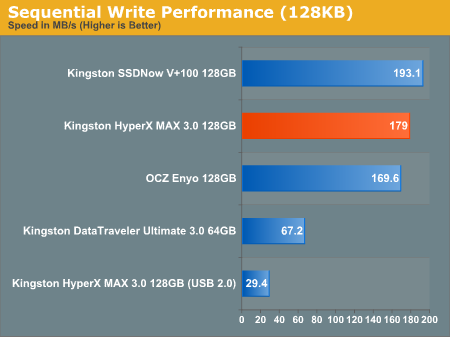
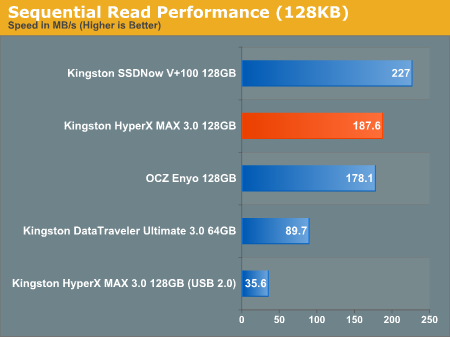
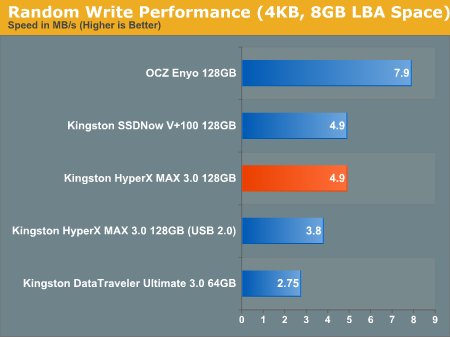
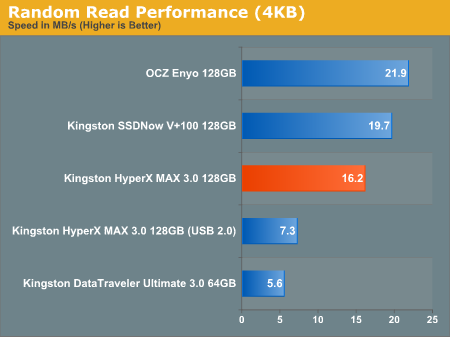
Final Words
For an external drive I'd say the focus should be primarily on sequential write performance as well as performance resiliency, both of which put the HyperX MAX 3.0 at an advantage. I'm really curious about the long term performance of the new T6UG1XBG controller/firmware and as a result I've started deploying drives based on it in my work systems.
| Kingston HyperX MAX 3.0 Lineup | |||||
| 64GB | 128GB | 256GB | |||
| Kingston HyperX MAX 3.0 | SHX100U3/64G | SHX100U3/128GB | SHX100U3/256GB | ||
Kingston isn't announcing pricing yet, however you can expect it to be offered at some premium over the SSDNow V+100. A 128GB V+100 currently etails for around $280, so I'd expect a 128GB HyperX MAX 3.0 to go for above $300. That would put it in the same pricerange as the OCZ Enyo, but as I mentioned above, perhaps better suited to most external drive usage models thanks to its greater performance resiliency.


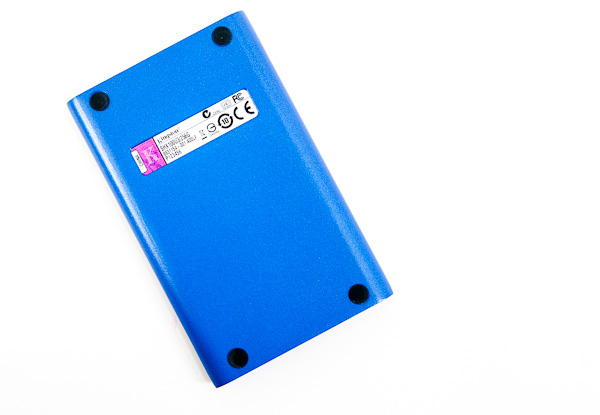








30 Comments
View All Comments
name99 - Wednesday, November 24, 2010 - link
"It does/should. 2.5" external HDDs need way more power to start spinning. This does work on most PCs."Ahh, the naivete of those who are convinced they carry an accurate mental model of the world in their heads.
Go LOOK at the power utilization figures of a range of SSDs as against a range of 2.5" disks some time. You might be more than a little surprised at what you see.
Chloiber - Thursday, November 25, 2010 - link
Well, why don't you share your knowledge with me and post a link.name99 - Thursday, November 25, 2010 - link
I would like to think that AnandTech users can use Google. Apparently not.Here's a table of SSD power consumption for a spread of devices. Note that at the peak end, we have utilizations of 3.7 to 4.1 W (for comparison a USB2 connector can deliver 2.5W, and FW 7W).
http://www.anandtech.com/show/3812/the-ssd-diaries...
A reasonable modern 2.5" magnetic drive, in contrast, draws 2.5W (basically engineered, I think, to run at USB2 power). Certainly our common experience is that Seagate and WD sell 2.5" drives that run just fine off a single USB connection.
http://www.seagate.com/www/en-us/products/laptops/...
blandead - Wednesday, November 24, 2010 - link
can someone make an 8gb micro SDHC card this fast? That would be amazing, they work through USB as well once plugged in right? Or same sort of thing at least?anyways kudos to Kingston I hope prices go down faster I'm really itching to buy an SSD for my new build soon as BD comes out hahaha might be waiting a while.
Noobz At Work - Wednesday, November 24, 2010 - link
I already have the stock 7,200 RPM Hitachi HDD I pulled from my laptop which was replaced with odly enough, a drive that was reviewed here which would be the Seagate Momentus XT 320Gb. On the note of having the stock drive lying around, I am eventually going to get an enclosure that has an e-sata port so I can utilize the one I have on this laptop.Anyway, you still can't beat the write speeds of a good old fashioned mechincal drive, and not to mention another posters statment about how SSDs consume more power than a straight mechincal disk. That is why I never leave my battery in my computer, because I am sure the solid-state portion of the drive in my computer will eat away the battery more than usual.
But, since I am partial to Kingston products(love my 16GB hardware-based 256AES locker+ data travler) Maybe next payday, I will order one just to have it for future use.
LordOfTheBoired - Wednesday, November 24, 2010 - link
Ummm.... no. The whole reason SSDs can be made to work without overhauling the host system architecture is that they DON'T draw power when off.They use flash RAM, just like thumb drives and SD cards and portable MP3 players and so on.
As-is, drives usually have power physically removed when the system is turned off, so it's simply not POSSIBLE for them to draw power.
As cool as it would BE if they used SRAM.... it's simply not going to happen. You'd have to redesign the power supply to provide constant power to the drives, and you'd lose your data every time the drive lost power.
...
Unless it was battery-backed, but I suspect a hundred gigs of SRAM would require a significant battery.
Chloiber - Thursday, November 25, 2010 - link
"you still can't beat the write speeds of a good old fashioned mechincal drive"Err...yes you can.
dqniel - Thursday, November 25, 2010 - link
Uhh. I can't tell if you're being sarcastic or are just clueless. SSDs don't draw more power than mechanical drives even while under load, much less idle, they don't draw any power while the computer is powered off (they aren't using volatile memory), and the write speeds, read speeds, and most importantly access times are superior to mechanical drives.bahamakyle - Thursday, November 25, 2010 - link
"That is why I never leave my battery in my computer, because I am sure the solid-state portion of the drive in my computer will eat away the battery more than usual."Nah man you're fine. Just save yourself the hassle and leave your battery in. Your SSD doesn't use any power when it's off. Unless of course you're joking haha.
mpx - Sunday, November 28, 2010 - link
Can you benchmark how well do these drives work for ReadyBoost? USB 2.0 flash drives and SSDs are quite slow (30MB/s is only 7,6k IOPS with 4kB pages), so ReadyBoost can't show it's potential. With this kind of drive, that has USB 3 interface it becomes much more interesting.How about other flash caching systems, like eBoostr or NVELO Dataplex?